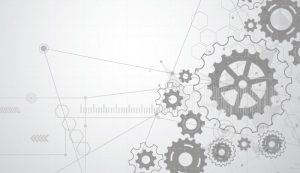“Why aren’t we getting more value out of the systems we have in place?” It’s a question many manufacturers ask themselves, and more often than not the answer is simple: you have too many systems to begin with. But actually addressing that problem and creating a sound solution isn’t nearly as simple as the answer. You can’t just slash and burn a handful of systems and expect to drive better results. A formal tech stack assessment and rationalization journey is necessary—a process to truly analyze and design the ideal consolidated tech stack of your business dreams. Otherwise, you can expect to lose anywhere from 20 to 30 percent in revenue each year due to the maze of applications and inefficiencies already in place.
To avoid being one of those companies, your manufacturing organization has to bravely face a true tech stack rationalization process. This very often includes some very frank conversations and letting go of systems that may be well-loved but aren’t, in reality, adding the value they ought to for the investment of time and money. Through this blog, we’ll walk through three basic steps in the Simplus tech stack rationalization process: 1) discovery sessions to understand the pre-existing systems, 2) creating a map of what you want your systems to look like in the future, and 3) comparing the present and the future to make key system decisions.
Discovery: Understanding what you already have in place
First things first: you won’t really know how to improve your manufacturing organization’s tech stack if you don’t know how it’s operating as-is. It’s crucial you create a thorough map of all systems and applications already in place, their intersections, the functional purposes they fill, and who is using what. It’s an inventory that maps each system to the business capabilities it supports and enables, usually revealing redundancies and overlap. We also recommend using this time to evaluate the technical debt each platform may or may not carry. This means any redundancies, lack of adoption, silos, or other inefficiencies that erode value from platforms, often rendering them obsolete.
Remember your ultimate goal is a harmonized tech stack full of trusted data and ease of use that supports and enables business processes. It will need to be secure, reliable, and adopted—if not, you risk losing 40 percent of your productivity due to extensive tool switching or swivel chair tasks. But, by being frank about what you already have in place before rationalization, you will set up your manufacturing business for true success down the line in steps two and three.
Assessment: Creating a map to where you want to go
Now that you’ve collected a thorough outline or flow of how your current state is operating, it might be even easier to articulate what it is you’re looking for. Did you notice way too many systems that overlap in functional purpose? Or notice some stray applications no longer in wide use? Those are just the start of changes you’ll want to include in your “future state” map.
Your future-state system/capabilities map should showcase a consolidation of systems and a rationalization of capabilities across those systems. It should enhance ease of use and reduce the need for the swivel chair motion from your team members. Simply installing one new system or platform won’t fix existing problems. Your future tech stack shouldn’t look exactly the same as it is now but with another new logo on board. You want to see a visible dwindling of systems in your future. Because with both fewer systems and greater confidence in the purpose of what few systems remain, your manufacturing organization will reap the rewards. Consider your future state roadmap a guiding light—the ultimate goal and final destination as you digitally transform.
Rationalization: Embarking on your application transformation journey
Finally, with your map of the old and the new thoroughly completed, you can start making the tough—but ultimately rewarding—rationalization decisions. This may include some very candid conversations about whether or not a system is delivering the kind of business value it ought to, even if it’s supposedly well-loved by the company far and wide. Maybe all it needs is a better integration, maybe it needs to be updated, maybe it needs to disappear altogether and be replaced with something more comprehensive. All of these are possible routes depending on your business goals and existing processes. In manufacturing, we often see organizations with the right technology platforms, but being used all wrong and with lost ROI. This may be the case if you notice CRM is just a glorified Rolodex. That doesn’t mean you have to chuck CRM. It means you need to integrate it better with your ERP and other platforms to get the benefits. No matter what decisions you have to face during rationalization, what matters is that your decision-makers have the gusto and the permission to make those tough calls in the name of a truly improved tech stack.
While you go through rationalization and make mission-critical decisions about approach technology, also be aware of regionalization and division-based differences. Oftentimes in massive manufacturing organizations, each region has a slightly different tech stack and distinct adoption habits that have formed over time. This same phenomenon may happen in one region but across different divisions within the region, such as functional departments or product lines. We’ve seen more and more manufacturers move towards standardization so that all regions, lines of business, and departments are using the same tools for the same purposes.
For example, we worked with one multinational HVAC manufacturer that wanted to make doing business easier for any partner or customer on any product. We worked hand in hand to create a partner relationship management portal that can easily handle warranty management, parts, orders, and servicing for many relationships: manufacturers, distributors, end users, and dealers. Now, this client has simplified process flows and standardized APIs for integration between CRM and ERP, and the first division to roll this new implementation out has done so well that other divisions are following suit to move onto the same platform. This has made for overall more predictable delivery and newfound scalability.
Tech stack rationalization is no small feat, and it often takes weeks of dedicated resources from multiple regions and departments to truly perfect. Simplus’ Advisory Services have supported countless manufacturers through this process, with in-house expertise on how to map your “now” to your “future” and empower your key systems like CRM and ERP to drive more value from each other. We’re trained in identifying functional gaps and redundancies and bringing in the right middleware to connect systems together. Reach out today to get started.















0 Comments